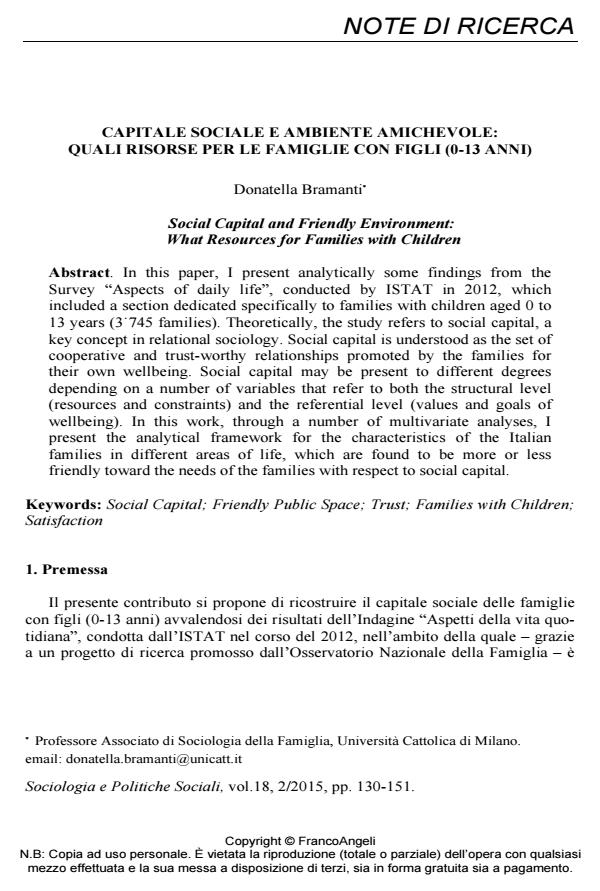Capitale sociale e ambiente amichevole: quali risorse per le famiglie con figli (0-13 anni)
Titolo Rivista SOCIOLOGIA E POLITICHE SOCIALI
Autori/Curatori Donatella Bramanti
Anno di pubblicazione 2015 Fascicolo 2015/2
Lingua Italiano Numero pagine 22 P. 130-151 Dimensione file 195 KB
DOI 10.3280/SP2015-002007
Il DOI è il codice a barre della proprietà intellettuale: per saperne di più
clicca qui
Qui sotto puoi vedere in anteprima la prima pagina di questo articolo.
Se questo articolo ti interessa, lo puoi acquistare (e scaricare in formato pdf) seguendo le facili indicazioni per acquistare il download credit. Acquista Download Credits per scaricare questo Articolo in formato PDF

FrancoAngeli è membro della Publishers International Linking Association, Inc (PILA)associazione indipendente e non profit per facilitare (attraverso i servizi tecnologici implementati da CrossRef.org) l’accesso degli studiosi ai contenuti digitali nelle pubblicazioni professionali e scientifiche
In this paper, I present analytically some findings from the Survey "Aspects of daily life", conducted by ISTAT in 2012, which included a section dedicated specifically to families with children aged 0 to 13 years (3?745 families). Theoretically, the study refers to social capital, a key concept in relational sociology. Social capital is understood as the set of cooperative and trust-worthy relationships promoted by the families for their own wellbeing. Social capital may be present to different degrees depending on a number of variables that refer to both the structural level (resources and constraints) and the referential level (values and goals of wellbeing). In this work, through a number of multivariate analyses, I present the analytical framework for the characteristics of the Italian families in different areas of life, which are found to be more or less friendly toward the needs of the families with respect to social capital.�
Parole chiave:Social Capital; Friendly Public Space; Trust; Families with Children; Satisfaction
Donatella Bramanti, Capitale sociale e ambiente amichevole: quali risorse per le famiglie con figli (0-13 anni) in "SOCIOLOGIA E POLITICHE SOCIALI" 2/2015, pp 130-151, DOI: 10.3280/SP2015-002007